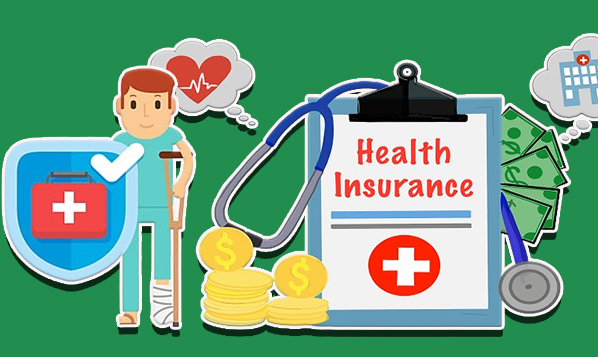Catastrophic health insurance is a type of insurance designed to cover high-cost medical crises, rather than ordinary healthcare expenses. This health coverage is only available to individuals under thirty, those facing severe financial difficulties, or those unable to purchase other health insurance. High deductibles are a feature of private health insurance companies’ catastrophic health insurance plans.

However, the health plan covers all of your medical expenses after you reach the deductible. Catastrophic health plans are a suitable option for young adults seeking comprehensive coverage at affordable prices. A high deductible means you will be responsible for paying the full cost of medical treatments until you reach the cap, except for free preventive care.
How Does Catastrophic Health Insurance Work
Health insurance for catastrophes functions similarly to regular health insurance. Catastrophic health insurance is a premium-based coverage that covers medical expenses such as hospitalization, prescription medication, and doctor visits. Catastrophic plans include health insurance deductibles. The maximum deductible is $9,450 for individuals and $18,900 for families.
Your deductible is the amount you pay for medical treatments in a given year before your health plan begins to pay for them. Catastrophic health insurance does not include coinsurance, in contrast to regular health insurance. A health plan’s coinsurance provision divides medical service premiums between the plan and member, with the insurer covering 70% and the member covering 30%.
The member receives this amount after exceeding the annual deductible under the plan but before the out-of-pocket limit is reached. In contrast to coinsurance, the deductible and out-of-pocket maximum of a catastrophic plan are the same amount. After you’ve met your deductible, a catastrophic health plan will cover your remaining medical bills for the rest of the year.
How Much Does Catastrophic Health Insurance Cost
If you maintain an acceptable level of health, catastrophic coverage can save you money because the premiums are often much lower than those for ordinary policies. Your insurer will provide you with a negotiated, typically discounted rate for treatments, similar to other major health insurance policies. The ACA mandates catastrophic plans to offer 10 essential health benefits, subject to deductible, and 100% coverage for in-network preventive care treatments.
One possible disadvantage of catastrophic insurance is that it may not settle medical expenses until overly high levels are reached. This is because their coverage limits and deductibles are normally high. This means that normal check-ups and minor injuries will have to be reimbursed for out of pocket.
Who is Eligible for Catastrophic Health Insurance
Families and individuals wishing to sign up for catastrophic coverage must fulfill certain qualifying requirements. People under the age of thirty-eight are usually eligible for catastrophic plans because they are less likely to have health problems. Due to financial limitations, the aged and those with chronic health illnesses who mandate regular medical care may be unable to obtain high-deductible plans.
People who are exempt from paying taxes owing to economic or financial issues may also obtain catastrophic insurance coverage. An affordability exemption may be granted if the most affordable plan available through the Marketplace or employment exceeds 8.09% of your income. In addition, if there is just one insurer or none at all offered in your area on the Marketplace, you may be eligible for a hardship exemption.
What Does Catastrophic Health Insurance Cover and Not Cover
Catastrophic health insurance offers coverage that is comparable to an ACA health plan. Moreover, this includes the ten essential health benefits:
- Ambulatory patient services are also known as outpatient care.
- Emergency services.
- Stays in hospitals.
- Services for laboratories.
- Services for mental health and drug misuse.
- Prescription drugs.
- Devices and services for rehabilitation.
- Children’s vision and dental care are included in pediatric services.
- Pregnancy, delivery, and postpartum care.
- Services for managing chronic illnesses, maintaining health, and preventing disease.
Until your deductible is fulfilled, your catastrophic health insurance does not cover emergency care. However, preventative therapy may be limited, and primary care physician visits may be included under certain plans. You should be informed of the extent to which your specific plans provide coverage.
Final Thoughts
Catastrophic health insurance provides financial protection in the event of a serious medical emergency. These plans have higher deductibles in addition to lower monthly prices. Consequently, not everyone requires catastrophic health insurance. Those who are generally in good health and want to protect themselves from unexpected charges might explore this reasonable alternative. Individuals requiring routine medical care may find a different plan more appropriate for their requirements.

